What Is A Contour Line Drawing
Have you heard about contour line art but aren't sure what it is? The good news is that you've likely already made dozens, maybe even hundreds, of contour line drawings throughout your life without realizing it! Contour drawing is one of the easiest and most effective ways to improve your hand-eye coordination and drawing skills. In this guide, we explain what contour lines in art are and how you make contour line art. We also suggest different contour drawing exercises so you can keep improving your skills. Contour line art is a method of drawing where you draw only the outline of an object, without any shading. "Contour" actually means "outline" in French, which is where the name comes from. For example, if you wanted to do a contour line drawing of a pear, you'd simply draw the outline of the pear, add a stem, and stop there. Some contour drawings will include outlines of important interior shapes (such as wrinkles in cloth or objects on a bookshelf), but contour drawings will never contain shading or minute details. Because you're focusing on just the shape of an object and not any minor details, contour line art is a great drawing method for beginning artists as well as those looking for some quick drawing exercises. Children, as well as people without a lot of experience drawing, typically make contour line drawings without realizing it, simply because this method is one of the easiest and quickest ways to begin drawing. However, just because contour line art is easy to start doesn't mean it's only meant for beginner artists or those who don't have the skills to do more detailed drawings. Contour line art has many uses, even for highly-experienced artists. Many artists will begin a project with a contour line drawing to get a quick sense of the piece's composition, then they'll later go back and add more details. Contour line art is also a good way to become more skilled at replicating the outline of an object and developing hand-eye coordination (which we'll explain more about in the next section). If you can't create strong and accurate outlines of an object, the piece will still look unfinished or slightly "off" even if you add in lots of details and embellishments. Professional artists have used contour art for centuries. Cartoonists often use contour art in their finished pieces, the ancient Greeks used it when decorating vases, and da Vinci frequently made contour line drawings when doing figure studies. It's an essential skill that every artist should know and practice regularly. The image on the left is an example of contour line art. The image on the right is NOT because it includes shading. In order to get the most from your contour line drawing practice, follow these four steps when making contour art. For your first contour drawing, we recommend choosing just one object to draw, as this will be easier to focus on than several objects. Put the object or place your seat in a spot where you have a clear view of the object. For materials, you'll need a drawing tool (pencil or charcoal is most common), and paper or a sketchpad. If you're using loose paper, you may want to tape it to something so it doesn't move around while you're drawing. Now you're ready to begin! It may surprise you to learn that, when you're drawing contour lines, you want to spend most of your time looking at the object itself, not at your sketchpad. This can be really difficult when you first start doing it, but that's the point! Contour drawing forces you to really notice and work to replicate the outline of an object. It trains your hand to follow what your eye sees. Start by spending about half your time looking at the object and half your time looking at your paper, and gradually work your way up to looking at the object 90% of the time. This will feel strange initially, and your first drawings will probably look a little wonky, but just keep practicing! As you develop your hand-eye coordination, it'll feel much more natural, and your drawing skills will improve as a result. You also want to make sure that you're capturing as much detail of the object's outlines as possible. If there's a notch or a warp in the object, make sure your drawing represents that. Contour art is all about replicating the form of an object as closely as possible. Many people new to contour art begin by drawing lots of short lines because they aren't used to not looking at their paper, and they don't want to make too big of a mistake by drawing a long line that doesn't follow the object's lines. However, you'll improve your drawing skills more if you draw fewer, longer lines. Drawing longer lines, especially without looking at your paper, improves your hand-eye coordination and helps you become more confident when drawing. It can be tempting to rush through contour drawing exercises, especially if you're used to drawing detailed pieces where the outline is only the first step. Remind yourself to slow down and concentrate on replicating the outline of the object as perfectly as you can. At the same time, don't freeze up while you're drawing. Especially when you first begin contour drawing, you may feel tempted to take breaks to compare your drawing to the actual object. Resist this urge! Remember, you want to spend very little time looking at your paper and more time looking at the object. Just concentrate on closely observing the object, keep drawing steadily, and pause and critique your work once you've finished. There's no "correct" amount of time to spend on a contour drawing, and it'll likely depend on what you're drawing. However, about 5 to 20 minutes per drawing is average. Now it's time to put all this new art knowledge to the test! In this section are eight contour line drawing exercises you can do to improve your drawing and observation skills. If you aren't sure where to start with contour line art, start with something right in front of you! Hands are a very common object to do a contour drawing of, so once you finish, you can look online or in art books for lots of other examples of contour drawings of hands to compare to your own piece. When you're drawing, remember to aim to look at your paper only 10% of the time. If you're still getting the hang of contour art and are not quite sure how to tackle a real-world object, start by replicating another artist's contour line drawing. Remember to look more at the object than at your paper, and focus on replicating the lines as closely as possible. A blind contour drawing means that you don't look at your paper at all--not even for a single second--from the time you begin your drawing until the time you finish. Cover your canvas or sketchpad if you need to. Expect your drawing to look a little funny, especially if it's your first time doing a blind drawing, but this is a great way to improve those hand-eye-coordination skills and learn to really focus on whatever it is you're drawing. This takes the concept of drawing long lines even further. For this exercise, you'll draw the object in one continuous line, never lifting your pencil from the paper until the outline is complete. Again, these drawings will look strange at first, but as you practice, you'll improve your drawing skills and your ability to recreate the lines you see in real life. Sometimes you just need a quick exercise to get your creative juices flowing, and contour art, because it doesn't get into the details of objects, is great for this. This exercise involves drawing five contour line pieces in less than five minutes. You can draw five different objects, draw the same object five times, or a combination. Because you're only spending a minute on each object, you'll need to be able to replicate its form quickly but accurately. Choose something you're very familiar with, such as a favorite childhood toy, the dresser that you've looked at every day of your life, or even a pet or friend, and make a contour line drawing of the object. This may be harder than you think. Because you know the object so well, you may be tempted to add in lots of detail, but remember, contour art focuses on the outer edges of the object. This is a good way to remember what's important in contour art and what you don't include. Cross-contour lines are a way to add depth to your contour drawings without adding shading. To add them, you'll draw parallel lines that run across the object, similar to those you might see on a topographic map. See examples here. Cross-contour lines will help improve your observational skills and learn more about the rules of perspective by requiring you to pay close attention to the outlines of an object and how the lines run across it. The parts of the object that are closer to you will have cross-contour lines closer together, while the more distant parts of the object will have lines further apart. Once you've gotten the hang of contour line art, try drawing an object upside down! You won't be able to rely on your memory as much since the object will be flipped, so this will exercise really force you to pay attention to the object's form as you observe it. Contour line definition art is a great way for any artist, whether beginning or advanced, to hone their drawing and observation skills. Contour line drawing involves only drawing the outline of an object, without any shading. When you do contour lines in art, you should spend the majority of the time looking at the object, not your paper, in order to improve your hand-eye coordination and really get a good sense of what the object looks like. Once you feel comfortable with the basics, there are many contour line art exercises you can try out to keep growing your skills! Are you making an art portfolio to apply to art schools?Check out our guide to learn everything your art portfolio must include to stand out from the crowd! Now that you know how to create a portfolio, are you wondering what art programs you should apply to? Check out our guide on the best art schools in the United States! Want more drawing exercises? We have a guide with over 100 drawing ideas to keep your artistic skills sharp! 
What Is Contour Line Drawing?
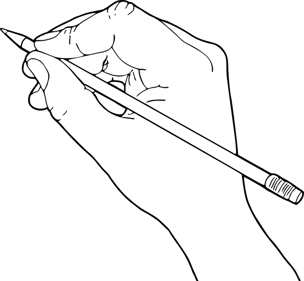
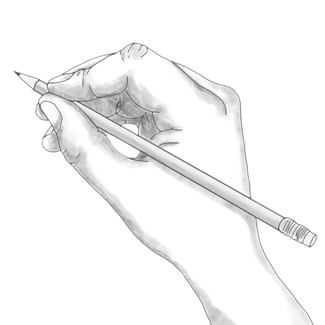
How to Draw Contour Lines in Art
Step 1: Choose What You'll Draw and Gather Materials
Step 2: Look at the Object
Step 3: Draw Long, Continuous Lines
Step 4: Go Slow and Steady
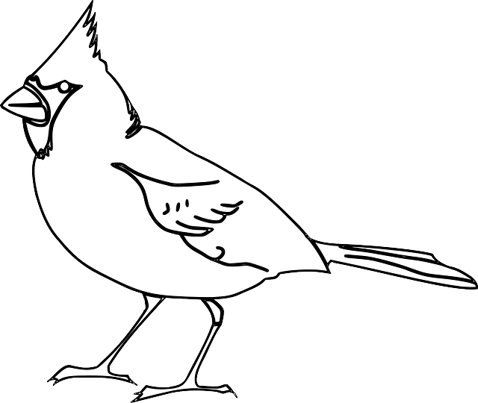
Contour Line Drawing Practice Exercises
#1: Make a Contour Drawing of Your Hand
#2: Copy a Contour Line Drawing by Another Artist
#3: Do a Blind Contour Drawing
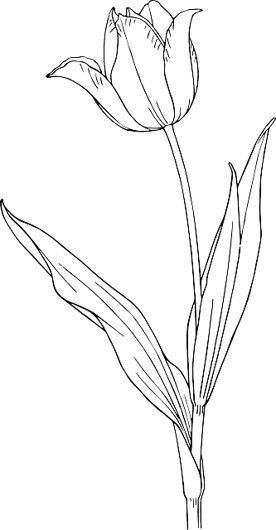
#4: Draw the Outline of an Object With One Continuous Line
#5: Make Five Contour Line Drawings in Less Than One Minute Each
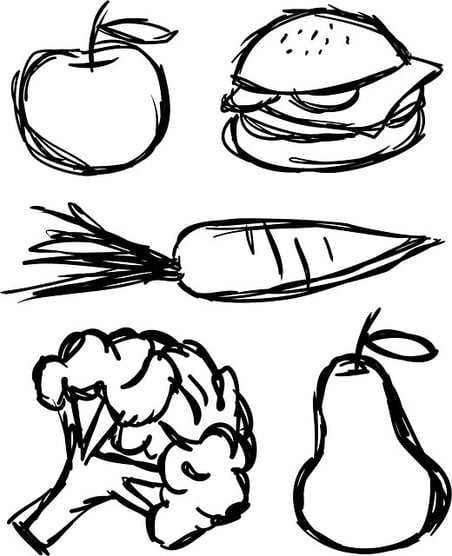
#6: Draw an Object You Know Really Well
#7: Use Cross Contouring to Add Dimension
#8: Draw an Object That's Upside Down
Summary: Contour Line Art
What's Next?

About the Author
Christine graduated from Michigan State University with degrees in Environmental Biology and Geography and received her Master's from Duke University. In high school she scored in the 99th percentile on the SAT and was named a National Merit Finalist. She has taught English and biology in several countries.
What Is A Contour Line Drawing
Source: https://blog.prepscholar.com/contour-line-art
Posted by: blanksenone1940.blogspot.com

0 Response to "What Is A Contour Line Drawing"
Post a Comment